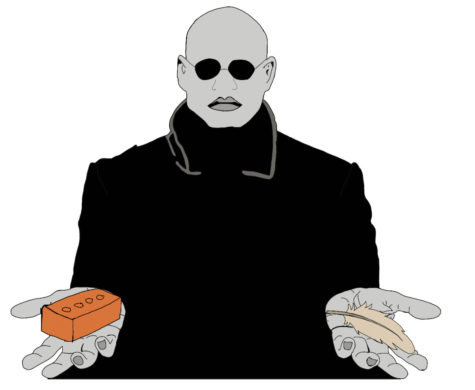OPINION: Forcing neutrality: The both-sides fallacy

When lines are drawn and sides are taken, some people try to find a happy middle. Compromise can be healthy, and keeping a clear head can mean thinking critically about who you judge, how you judge them and why you judge them.
Sometimes, this compromise means realizing that your preferred side is not as infallible as you believe. Other times, this can mean giving other viewpoints a fairer judgement. When trying to act fairly to all parties involved, readers should be careful to avoid “bothsidesing,” where neutrality or a desire for equivalence supersedes impartiality and honesty.
A famous example of bothsidesing dates to 2017, when former President Donald Trump said that there were “very fine people” among marching white nationalists and counter-protestors at a demonstration in Charlottesville, Virginia — suggesting both groups were at fault for the violence that transpired. More recently, the Tulane community saw an example of bothsidesing in an article concerning the artist known as Ye.
This article, written by a Tulane student, wrongly claims that unconditional love is a tenet of the Ten Commandments. The article also wrongly claims that the Black Lives Matter movement believes Black people do not know their own worth.
Most importantly, the article tries to “both-sides” Hitler and the Jewish people he committed genocide against. The article strongly suggests that Ye’s anger towards Jewish people as a group is justified and appropriate given that Ye claims to have been mistreated by certain Jewish individuals and claims that Hitler is equal to any Jewish person.
The article later applauds Ye for posting an image of the Star of David which had a swastika inside of it.
The issue with bothsidesing this situation is that claims such as “Hitler and anyone Jewish are equal” imply moral equivalence, which is vastly different from inherent equivalence. Inherently, all people are equal. Everyone is entitled to certain rights, such as the right to be treated fairly regardless of race or religion.
What this bothsidesing implies, however, is that Hitler is no more or less deserving of condemnation than any randomly-selected Jewish person. This is why readers should always be cautious when someone suggests that both sides are equal — a genocidal supremacist is not in any way morally equivalent to, for example, a Jewish infant that died under his order.
Bothsidesing is a convenient way to generate false equivalence, as it minimizes the extreme or inappropriate actions of one party by suggesting that other involved parties are morally equivalent or bear the same level of responsibility. This may stem from a desire to treat all parties involved fairly, but — as seen in the claim that Hitler and Jewish people are equivalent — can also lead to none of the involved parties being depicted in an accurate way.
It is more than okay to acknowledge that one side is in the wrong, or that the burden of responsibility rests more on one party’s shoulders than another. If one person is holding feathers and the other side is holding a brick, it’s fine to acknowledge that one’s carrying more weight than the other.
Everyone deserves their human rights and equal treatment, but not everyone deserves equal blame. Sometimes, one side is worse than the other.
Your donation will support the student journalists of Tulane University. Your contribution will allow us to purchase equipment and cover our annual website hosting costs.


